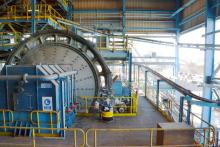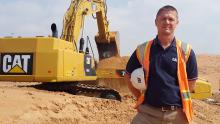The global demand for graphite has led to the reopening of the first operational graphite mine in Australia for 25 years, with two more set to follow.
The mines are located on South Australia’s Eyre Peninsula, 30km from the main town of Port Lincoln.
A booming world graphite ore price, a slump in Chinese production and the recent discovery of new-age material graphene, has made this common mineral extremely popular and profitable.
It is expected there will be at least three mines operating by 2016 with each mine processing about 250,000tonnes of ore to create 35,000tonnes of graphite concentrate for export.
Speaking at the Paydirt 2014 South Australian Resources and Energy Investment Conference at the Adelaide Convention Centre, Dr John Parker, managing director of Lincoln Minerals, says his company is advanced in its plans to have a mine operating by 2016.
“The graphite mines present an extremely exciting and positive time for all of South Australia, says Parker.
“The creation of jobs for South Australians, royalties for the state government and the research possibilities for graphene all combine to create something special.’’
It is estimated that the boom could boost South Australian coffers by more $100 million (€68 million/US$94 million) within the next two years.
“The price for graphite spiked significantly around four years ago, jumping from several hundred dollars a ton to $3,000,’’ says Parker.
“It has now settled to around $1,250 a tonne which has made mining graphite financially attractive and viable again.’’
The mining operation would be based around Port Lincoln’s high grade Kookaburra Gully graphite deposit and nearby historic Koppio graphite mine just north of Port Lincoln.
The concentrate would be exported in sealed bulka bags (25kg bags) and most likely consignments would be in 5,000tonne parcels, requiring only 5-10 ship movements/year, or via shipment with regular container traffic.
Parker proposed an initial start-up operation mining 250,000 of ore, giving a mine life of between five and seven and a half years. The open pit would be based on mining the existing known resource to 100m below ground.
The deposit, however, remains open at depth and along strike, offering the potential to extend the mining life of the pit.
Studies have found the Kookaburra Gully mining cost profile would be competitive with equivalent operations in Canada, a key graphite exporter.
Graphite mining from 2015 will be subject to Government and community approvals, finance and market conditions.
Graphene is a single atomic layer of graphite and is stronger than steel, conducts electricity better than copper and is better than silicon for integrated circuitry. Future applications include roll up computer screens.
Graphene was discovered in 2005 by two scientists experimenting in their UK laboratory and they were awarded the Nobel Prize for Physics in 2010 for their discovery.







